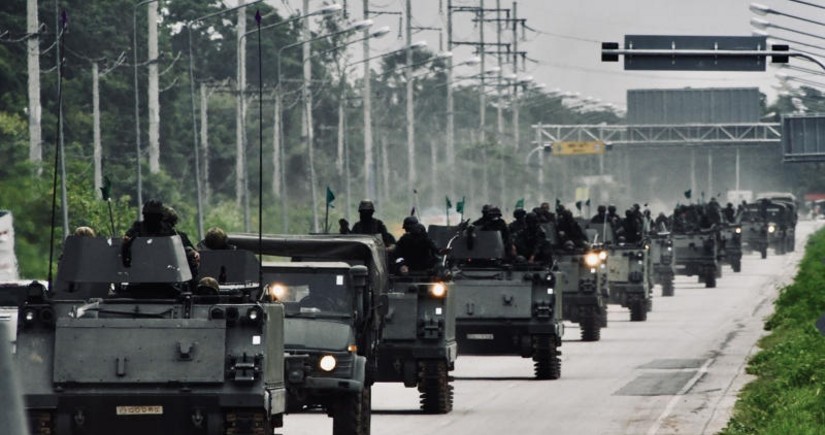Escalation of Thailand-Cambodia conflict: A legacy of French volonialism
- 25 July, 2025
- 14:12

On Thursday, July 24, armed clashes reignited over a disputed border area between Thailand and Cambodia. Armed confrontations between the two nations are not new, but this time the scale of fighting has surpassed previous incidents. Bangkok and Phnom Penh have contested ownership of the Preah Vihear and Ta Moan Thom temple complexes for over a century.
The roots of this confrontation go back to the early 20th century when the borders of French Indochina were drawn imprecisely, and the legal framework was weak. Since then, both sides have developed their own interpretations of the boundary, and diplomatic efforts to resolve the dispute have so far failed.
In 1904, Siam (modern-day Thailand) agreed to establish a demarcation commission to define its border with Cambodia, then under French control. Initially, the parties agreed to draw the line along the Dangrek mountain range, which meant that the Preah Vihear temple would remain under Siam’s control. However, in 1907, French geographers published a map showing the temple on Cambodian territory.
Despite this, Siam effectively controlled the temple complex for decades and only noticed the discrepancy in the 1930s. Thai geographers carried out their own survey, and after French troops withdrew in 1953, Thailand deployed its forces there.
In 1959, Cambodia brought the case to the International Court of Justice, which in 1962 ruled that Thailand must cede the temple to Cambodia. The court concluded that Thailand’s delay in challenging the map was tantamount to tacit acceptance. In 2008, Thailand protested Cambodia’s efforts to list the temple complex as a UNESCO World Heritage Site.
Thus, this century-old conflict between the two nations remains a legacy of French colonialism.
Armed clashes in the border area occurred in 2008–2011. The last major incident resulted in six Cambodian and four Thai soldiers killed and around 40 wounded during three days of fighting. Now, in just one day, more soldiers and civilians have been killed than in four days of fighting 14 years ago.
Tensions began rising again in May after a Cambodian soldier was killed in a brief border skirmish. Thai Prime Minister Paetongtarn Shinawatra called Cambodian Senate Chairman Hun Sen, the country’s de facto leader, to discuss the situation. Their conversation, in which the Thai premier criticized her military, leaked to the press, sparking outrage among Thailand’s political elite. As a result, the Constitutional Court temporarily suspended the prime minister, plunging Thailand into a political crisis.
Since then, both countries have been moving closer to armed conflict as diplomatic efforts faltered. In the week leading up to the clashes, ten Thai soldiers were killed by anti-personnel mines. Thailand blamed Cambodia, which dismissed the accusations. The final straw came on July 23, when Thailand expelled the Cambodian ambassador and recalled its envoy from Phnom Penh.
On July 24, the first shots were fired, quickly escalating into a full-scale firefight. Both sides accuse each other of initiating hostilities. According to Thailand, Cambodia launched the escalation by firing Grad rockets into Sisaket Province, hitting civilian infrastructure, including five hospitals and a store. Thailand’s Ministry of Health reported that as of July 25, 14 civilians and one soldier were killed, and 46 people injured. In response, Bangkok deployed six F-16 fighter jets, which struck Cambodian positions.
Cambodia claims Thailand started the conflict. In Cambodia’s Oddar Meanchey Province, at least one person was killed and five injured. More than 4,000 residents have been displaced from their homes near the border.
Despite both sides’ public statements about avoiding escalation, the confrontation continues to intensify. Cambodian Prime Minister Hun Manet appealed to the UN Security Council for an emergency meeting. The council is scheduled to hold a closed-door session Friday evening.
However, it is unlikely that the UN Security Council will adopt any resolution acceptable to both sides. Most likely, it will issue a statement urging de-escalation — a “Leopold the Cat-style” appeal for peace.
Some experts believe the Thai ruling elite is using this conflict to distract from the domestic political crisis. Once the internal situation stabilizes, the escalation may subside. Others argue that both sides entered the conflict with a clear understanding that it should not escalate into a large-scale war. In other words, they acted according to the principle: “Make some noise and go home.” Many believe that both countries currently lack strong leaders with enough authority and confidence to end the confrontation.
Considering all these factors, it is expected that flare-ups between the two countries will continue periodically, especially if they fail to find a diplomatic solution to the territorial dispute.
The current escalation between Thailand and Cambodia underscores how dangerous the legacies of colonial imperialism can be.
